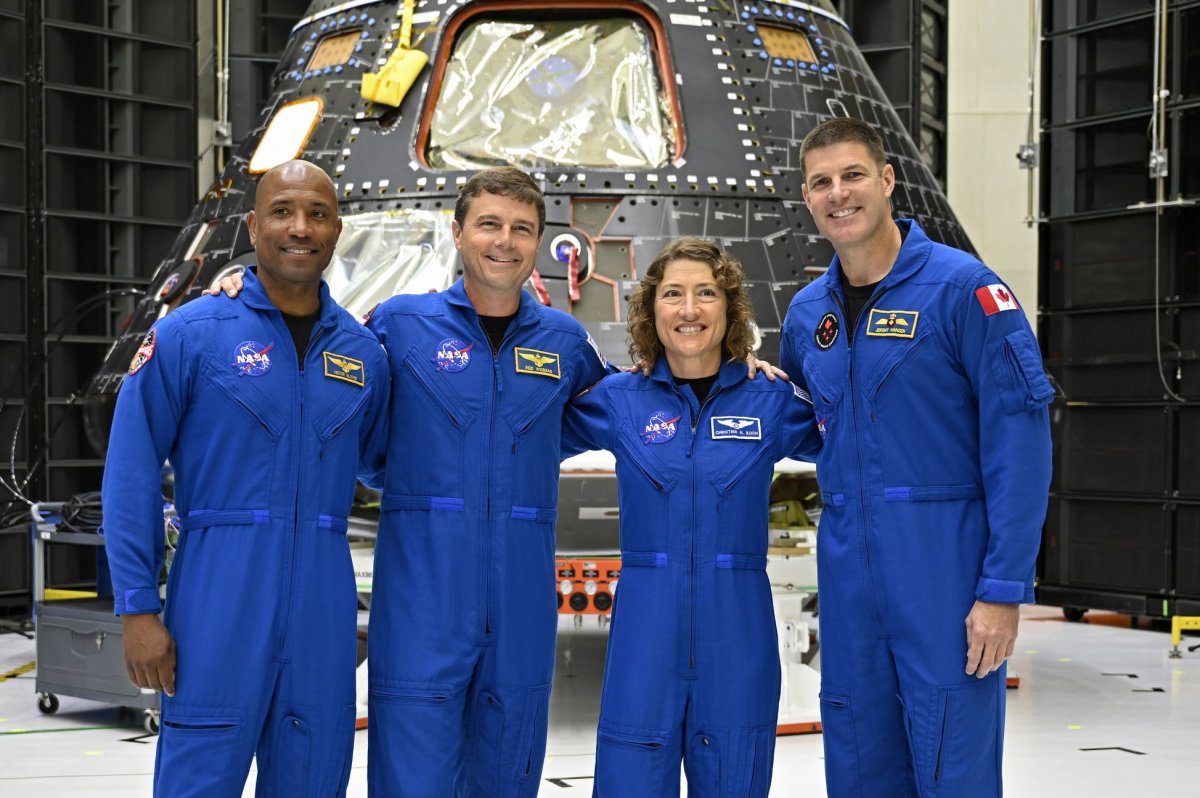August 8 (UPI) — NASA officials confirmed that their ambitious Artemis moon mission schedule remains on track, despite collaboration challenges with private companies, particularly SpaceX, and international interests.
During a press conference at the Kennedy Space Center in Florida, James Free, associate administrator for exploration systems development, expressed his concerns about critical tasks that need to be completed in order to turn these future space quests into a reality.
The target launch date for Artemis II, which will travel to the moon, is set for late November 2024, followed by Artemis III, which aims to land astronauts on the moon, scheduled for launch in December 2025.
One of Free’s main concerns is the testing and preparation of SpaceX’s Starship for Artemis III. The Starship is designed to land astronauts near the moon’s ice-rich south pole.
Free has previously voiced concerns about whether SpaceX will be able to meet NASA’s timeline. He briefly discussed a recent visit with SpaceX engineers to review their progress and launch schedules.
“My concern remains the same because they haven’t launched,” Free said. “The insight from the visit was tremendously valuable. Most importantly, our teams had the opportunity to communicate and discuss the details. We were able to emphasize the importance of considering the whole picture.”
If necessary, NASA is open to launching a different mission in December 2025.
“We are holding all contractors to the December ’25 date,” he said. “If there are significant delays, we have evaluated the possibility of other missions.”
The biggest challenge facing the next mission is excessive charring to the heat shield of the Orion spacecraft during the Artemis I return flight.
Free stated that NASA’s investigations are making progress in pinpointing the root cause, and they expect to have a final resolution by April at the latest.
Artemis I experienced several delays before finally launching in November. Hurricane Ian and Hurricane Nicole caused postponements in the weeks leading up to the launch, while operational issues caused additional delays.
For Artemis II, the four-person crew, consisting of three Americans and one Canadian, had their first look at the Orion spacecraft and its new hardware. Training is currently underway, and a nighttime recovery test was recently completed.
Artemis II will serve as a manned flight to and beyond the moon, testing NASA’s space launch system and the Orion spacecraft systems. The spacecraft will orbit the Earth twice to gain speed towards the moon and then orbit the moon for a “free-return trajectory” back to Earth.
This flight will take astronauts farther from Earth than any astronaut has ever been, with an estimated duration of 10 days. However, the mission could be extended up to three weeks, if necessary, to achieve additional objectives.
“We are excited about the mission,” said mission commander Reid Wiseman. “When you turn the corner and see the spacecraft that you will ride to the moon, it is a great day.”
Artemis II will undergo a thorough system check 90 minutes after launch. If any significant issues are identified, the crew will return to Earth. In fact, Wiseman stated that the spacecraft is capable of returning at any time within the first 24 hours of the mission.
“If they decide it’s unsafe, we come home,” said Wiseman, who was selected as an astronaut in 2009 and previously headed the Astronaut Office. “I appreciate the way safety is integrated into this mission profile. There is a strong trust within this team.”
Since April, the crew has been engaging with engineers from Lockheed Martin in Denver, studying the spacecraft’s systems at Johnson Space Center in Houston, and training with the U.S. Navy. Wiseman himself is a former naval aviator.
Wiseman believes that the mission is already a success as the crew and researchers continue to learn and prepare for an eventual mission to Mars.
“The success of Artemis II is in seeing our colleagues on the lunar surface assembling Gateway. They will follow in our footsteps and walk on Mars,” he said.
Gateway is a lunar base that NASA plans to construct on the moon’s surface. The agency will first research the composition of the lunar surface to develop a livable and sustainable base.
NASA’s Artemis III mission will send astronauts to the moon’s south pole, described by NASA Administrator Bill Nelson as a “different moon” compared to the one where Neil Armstrong and Buzz Aldrin landed in 1969.
“The south pole is marked with deep craters, and most of them are in total darkness due to the angle of the sun,” Nelson explained. “This limits the available landing and utilization areas.”
Researchers will investigate the potential presence of water, which would be a valuable resource for further deep space exploration.
Establishing a base on the moon is a significant milestone for NASA and the 28 countries that have signed the Artemis Accords. Nelson expressed concerns that if China wins the modern space race to the moon, they may claim the moon’s resources.
“If we discover abundant water there, it could be utilized by future crews and spacecraft. We want to ensure it is accessible to all,” he said.
Denial of responsibility! VigourTimes is an automatic aggregator of Global media. In each content, the hyperlink to the primary source is specified. All trademarks belong to their rightful owners, and all materials to their authors. For any complaint, please reach us at – [email protected]. We will take necessary action within 24 hours.



